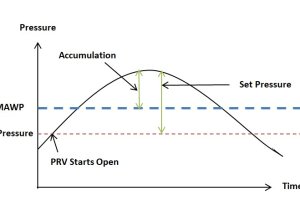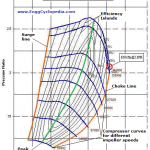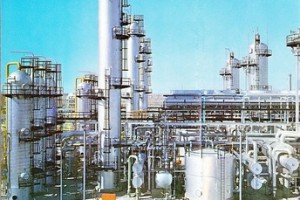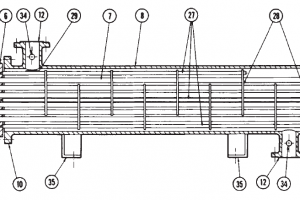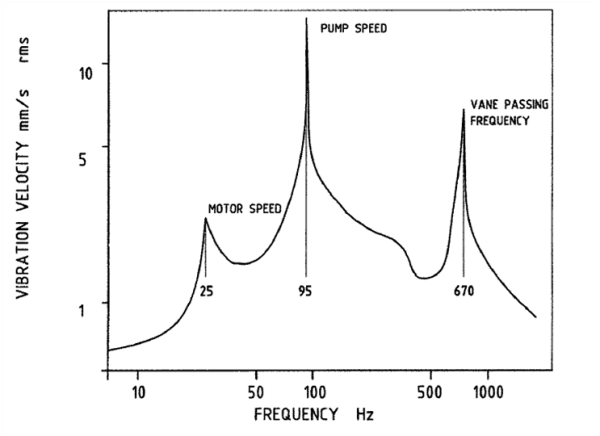Flare/Vent network in oil refineries, oil and gas processing plants, all the relief devices that can emit hydrocarbons are connected to a flare/vent network. The flare/vent network ends up in a flare or vent stack which continuously emits the purge gas hydrocarbons to atmosphere. A vent stack does not burn the hydrocarbons and simply disposes them to the atmosphere at a safe location. Hence gas flow emitted by a vent stack is typically small. When the gas flows in to be continuously disposed are quite high, the gas needs to be combusted before disposing it to the atmosphere. This consumption is achieved in a flare stack. The hydrocarbons are continuously combusted at the flare stack tip before disposing to atmosphere.
Air Ingress
Typically the flare/vent network along with the vent KO drum operates at a low pressure close to atmospheric pressure. This pressure is actually the built-up back pressure due to the continuous flared or purged gas flow in the vent stack. Pressure at the vent stack tip is atmospheric and back-pressure in the knock out drum is atmospheric pressure plus the frictional pressure drop from continuous venting/purging of the gas.
If the flow of gas to vent/flare stack stops for some reason, there is a possibility of air ingress into the flare stack and into the vent KO drum, vent network. This can result in an explosive mixture of air and hydrocarbons in the vent/flare network, which can be catastrophic.
Continuous purging of hydrocarbon gas to avoid air ingress
One of the ways to avoid air ingress into the flare stack, vent KO drum, flare network and subsequent catastrophic consequences, is to continuously purge a small flow rate of hydrocarbon gases. This continuous hydrocarbon gas purge flow in the flare network helps to build up some positive backpressure at the vent knock out drum. This is the normal operating pressure for the vent KO drum when no other sources (relief valves, blowdown valves etc.) are emitting any relief flow. Thus continuous purge gas flow maintains a small positive backpressure in the vent KO drum, vent header and helps to keep the air out.
It is important for the source of the continuous purge gas flow to be located at the farthest end of the flare/vent network from the flare stack. This way the constant positive back pressure can be felt throughout the flare network, at all the relieving sources.
API standard 521 describes the equation to determine minimum purge gas flow requirement for a flare stack of given diameter and given composition of the continuous purge gas flow.
Another ways to avoid ingress into the flare stack, flare KO drum, flare network are - liquid seal, flame arresters etc. Although flame arresters are not frequently used due to possibility of obstruction in the flare stack.
